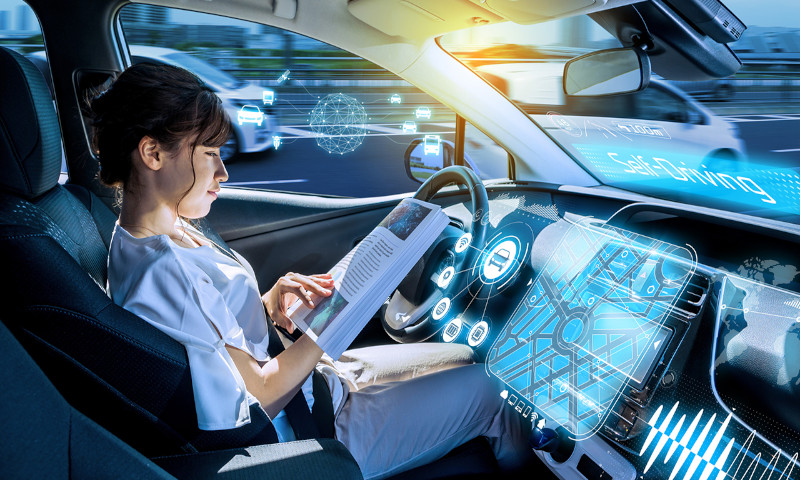Once associated mainly with smartphones, OTA updates are now reshaping how vehicles are maintained, managed, and enhanced throughout their lifecycle. As cars become increasingly software-driven, OTA technology enables automakers to deliver critical updates, enhancements, and fixes wirelessly—eliminating the need for physical service center visits.
For both manufacturers and consumers, OTA updates mark a significant leap forward in convenience, cost-efficiency, and safety. This article explores how OTA technology is revolutionizing vehicle maintenance, the systems behind it, and the benefits it brings to the connected automotive ecosystem.
What Are OTA Updates in the Automotive Industry?
OTA (Over-the-Air) updates refer to the wireless transmission of software and firmware updates to vehicles via cellular, Wi-Fi, or satellite networks. These updates can target a wide range of vehicle systems, including infotainment interfaces, navigation maps, battery management systems, ADAS (Advanced Driver Assistance Systems), and even core driving functions in electric or autonomous vehicles.
The process allows OEMs to remotely diagnose issues, roll out improvements, and implement security patches without requiring drivers to schedule a visit to a service center. As vehicles become more connected and digitized, OTA updates are emerging as an essential component of automotive software lifecycle management.
The Architecture Behind OTA Systems
Implementing OTA updates requires a robust and secure technology infrastructure. Key components include:
Embedded Vehicle Software
Modern vehicles are equipped with ECUs (Electronic Control Units) and onboard computers capable of running and storing software updates. These systems must support update management protocols and have built-in redundancies to prevent failures during transmission.
Cloud-Based Update Management
Manufacturers use centralized cloud platforms to manage updates, track vehicle versions, and deliver customized software packages. These platforms also analyze data to determine which vehicles need which updates, ensuring precision and scalability.
Secure Communication Channels
OTA systems must be designed with strict cybersecurity measures. Data is encrypted during transmission, and digital signatures validate update authenticity. Vehicles are also equipped with fallback systems to revert to previous software versions in case of errors.
Benefits of OTA Updates for Automakers and Drivers
OTA technology provides a win-win for both manufacturers and vehicle owners by reducing costs, increasing efficiency, and improving user experience.
Reduced Recall and Warranty Costs
One of the most significant advantages of OTA updates is the ability to fix bugs and address issues remotely, reducing the need for costly and time-consuming recalls. For automakers, this means lower service center loads and warranty claim expenses.
Enhanced Customer Convenience
For drivers, OTA updates eliminate the hassle of scheduling service appointments for software fixes or feature installations. Updates can be scheduled during off-peak hours and executed while the vehicle is parked, providing a seamless and frictionless experience.
Continuous Vehicle Improvement
With OTA, a vehicle doesn’t remain static after it leaves the factory. Manufacturers can add new features, improve performance, and enhance safety systems long after purchase. This transforms the ownership experience, offering ongoing value over time.
Real-Time Security Patching
As cars become connected to the internet, they face the same cyber risks as other smart devices. OTA updates allow manufacturers to quickly patch vulnerabilities, improving vehicle and data security and ensuring compliance with cybersecurity regulations.
Data-Driven Optimization

Vehicles equipped with telematics can send performance and usage data back to the manufacturer. Analyzing this data allows OEMs to understand real-world use cases and refine future updates, tailoring improvements based on actual driver behavior and conditions.
OTA and the Rise of Software-Defined Vehicles
OTA updates are a crucial enabler of the software-defined vehicle (SDV) era. In SDVs, hardware capabilities remain consistent, while software upgrades introduce new functionality, personalization, and intelligence over time. This shift allows OEMs to differentiate offerings, upsell digital features, and develop recurring revenue models via subscription-based services.
From adaptive cruise control enhancements to in-cabin voice assistant improvements, OTA makes it possible to unlock new capabilities and keep vehicles up to date with evolving user expectations and industry standards.
Challenges and Considerations in OTA Deployment
While the benefits of OTA updates are substantial, implementing them at scale requires addressing several challenges:
Compatibility Across Models: OEMs must ensure updates are compatible with a wide range of vehicle hardware configurations.
Testing and Validation: Every update must undergo extensive testing to avoid unintended consequences that could impact safety or functionality.
Regulatory Compliance: Governments and industry bodies are starting to regulate OTA update protocols, requiring clear logging, audit trails, and user consent mechanisms.
User Education: Drivers need to understand the value and process of OTA updates to avoid skipping or disabling them.
Unlocking the Future with OTA
As digitalization accelerates across the automotive sector, OTA updates will only grow in importance. They not only streamline vehicle maintenance but also open doors to real-time innovation, customization, and proactive service models.
Avenga – Custom Software Development plays a pivotal role in this transformation, offering end-to-end solutions for connected vehicle technologies. From secure cloud platforms to embedded system integration, Avenga helps automotive companies embrace the OTA revolution and deliver future-ready mobility experiences. Learn more at https://www.avenga.com/connected-cars-and-cloud-services/
OTA technology is not just a technical advancement—it represents a shift in how vehicles are maintained, experienced, and evolved. As adoption increases, it promises a sma



